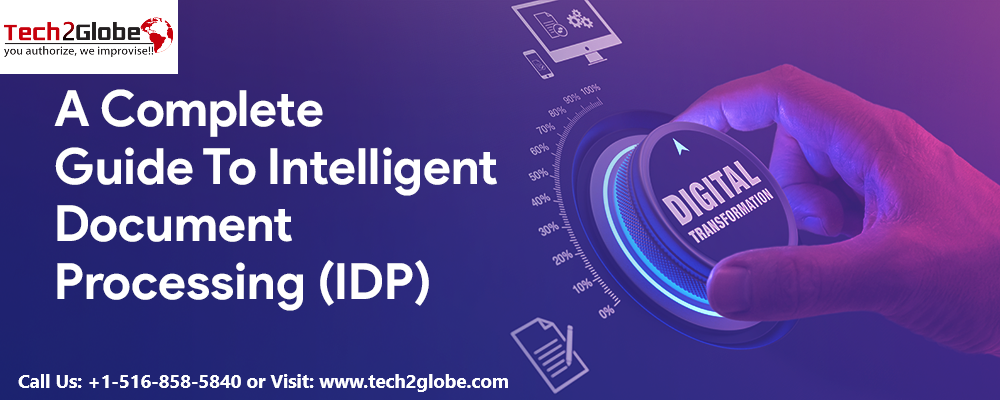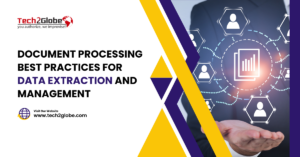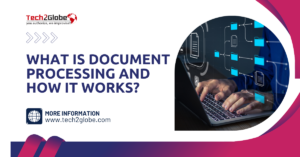Have you ever found yourself frustrated with scanning documents only to realize they couldn’t be scanned at high resolution or that the document was too thick?
There is no shortage of companies providing Intelligent Document Processing solutions for converting paper documents into electronic formats. The problem is that these solutions aren’t always very user-friendly. For example, Adobe Acrobat Pro costs $119, and you are limited to only 300 dpi (dots per inch) quality. If you want to convert multiple files at once, each file will cost $49.99.
So, where does that leave us? There are several options for those wanting to scan their own documents. This article discusses some of them and why they are better than other alternatives.
What is Intelligent Document Processing? The Ultimate Guide
Intelligent document processing (IDP) refers to the ability of computers to analyze documents and extract information from them. This is done through the use of artificial intelligence (AI), natural language processing (NLP), machine learning (ML), and other technologies.
IDP has become a key component of modern document processing services, enabling them to automate processes and improve efficiency. For example, document processing companies manage large volumes of data, identify trends and patterns, and provide insights into customer behavior.

- PDF (Portable Document Format) vs. DOCX
PDF files were created to deliver documents on the web, while Microsoft Word was designed to create documents used in word processing applications. While they may look similar at first glance, their differences lie in what they do best.
When using a PDF file reader, you can easily open and view any document stored online without installing software on your computer. However, some features of a PDF file reader may not work properly if you use certain programs, such as Microsoft Office.
On the contrary, DOCX contains data about how the text should appear on each page, including font size, paragraph style, margins, etc. This allows the program to ensure everything looks correct regardless of the platform, application, or device used.
Looking for good outsource document processing services USA & how it works, try visiting the website in the link.

- OCR (Optical Character Recognition) vs. Tagging
OCR stands for optical character recognition, a process where a scanner can automatically recognize text in paper-based documents, such as a book or a receipt. Tagging is a method by which users can apply metadata to individual images that capture the content of documents.
Tags are simply descriptive labels that give context to your digital content. Document processing companies believe that because tags are applied manually, they require human interaction to get them right and stay updated.

- Acrobat Reader vs. Adobe Reader
Adobe Reader is an Adobe product that provides an interface between your computer and a PDF file. You can use it to navigate through pages of a PDF file, make notes, highlight passages, add comments, search the document, and much more.
However, you cannot edit the contents of a PDF file directly. Instead, you have to extract the information you need from a PDF file and then convert it into something else before you can modify it.
In contrast, Acrobat Reader is an Adobe product designed to edit PDF files. Moreover, it gives you direct access to the actual source material to make changes directly.
Unfortunately, Acrobat Reader only works well with PDF files created by Adobe products. If you need to edit PDF files generated by third-party applications, you may choose Acrobat Reader or its free counterpart – Preview. Therefore, consider Data Management Services to give you better advice to get good options at a favorable rate.

- Acrobat vs. Adobe InDesign
Acrobat is a desktop version of the popular Creative Suite software package, which includes programs such as Illustrator, Photoshop, Dreamweaver, and InDesign. These are commonly used to design websites, brochures, flyers, catalogs, newsletters, magazines, and other printed materials. As a result, Acrobat is often used to help manage these projects.
Adobe InDesign, however, is a professional typography and layout tool. It helps designers craft custom publications and print products. Its extensive features allow users to manipulate text, graphics, and layouts in ways that would normally take hours or days to accomplish through manual methods.
How Intelligent Document Processing Company Work?
Data Processing services is now recognized as an advanced emergence of OCR that employs AI to automate tasks within document-related workflows. But what exactly can it do? Consider the following functions that IDP frequently provides:
- Data Gathering
- Data Extraction
- Classification
- Privacy preservation
- File Conversion
Intelligent Document Processing Services By Tech2Globe
To summarize, if your company only processes a small number or variety of documents, Tech2Globe may be a better place to start. Our document processing services frequently require intelligence, particularly when dealing with documents in multiple languages, formats, and structures. An Intelligent Document Processing company would be required for this.
This is why, with our AI-powered IDP solution, Tech2Globe, we can confidently automate your document workflows at scale. It will improve your data extraction, classification, document conversion, masking, and verification.










